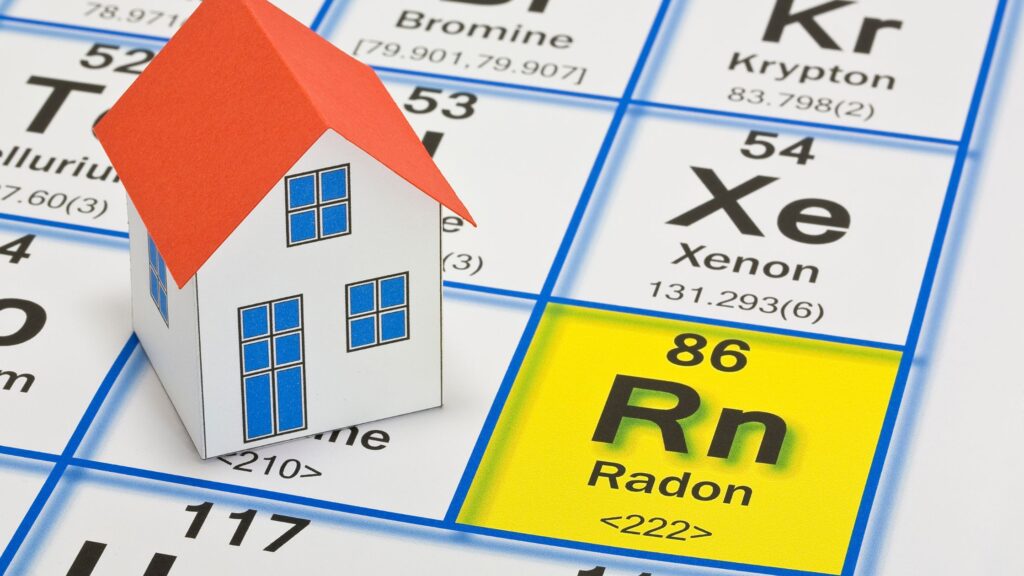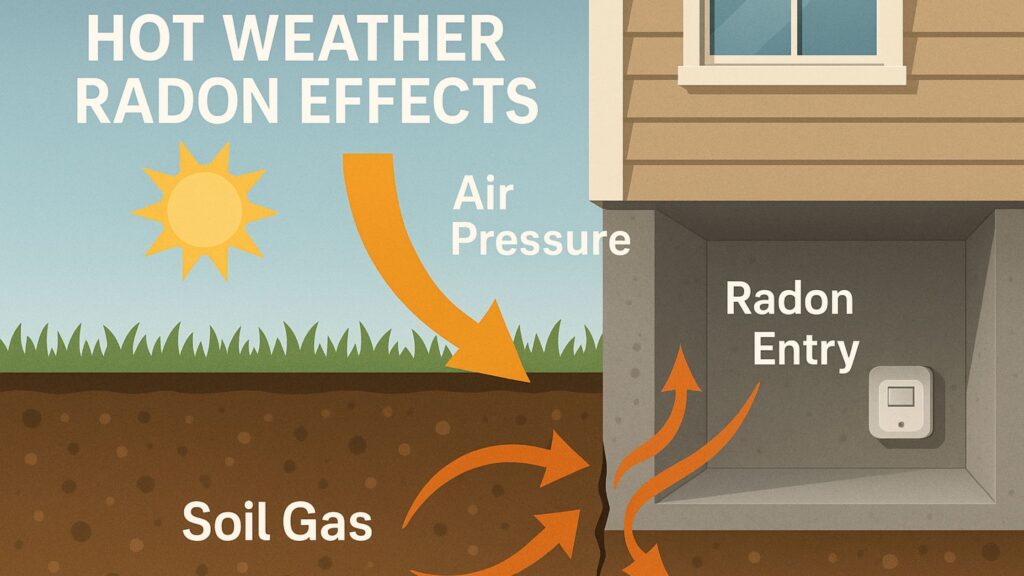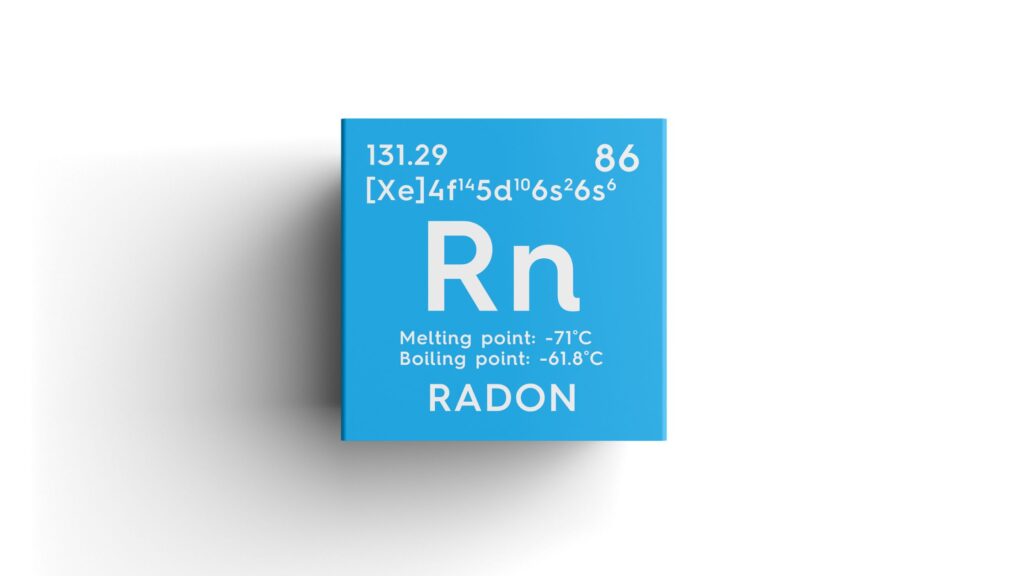When constructing or maintaining underground spaces like tunnels, basements, and utility vaults, radon is a hidden danger that must be taken seriously. These enclosed areas have a higher risk of radon, making it essential to address the issue. Radon exposure in such spaces can lead to long-term health risks, including lung cancer. It is crucial to implement effective mitigation strategies to safeguard both the structure and the people who work in or occupy these areas. In this article, we’ll dive into radon mitigation for underground infrastructures: what it involves, why it’s important, how to implement it, and how experts provide customized solutions.

Understanding the Risk in Underground Spaces
Underground and semi-underground structures are more prone to radon risks because they are in direct contact with soil or rock and have limited ventilation. Radon, a naturally occurring gas from uranium and radium, can seep into these enclosed spaces. Additionally, the lack of natural airflow and confined space can cause radon to accumulate more easily.
Studies show that optimizing ventilation is crucial for controlling radon levels in tunnels and caves. For example, in deep underground facilities, radon concentrations decreased only after improving air intake and ventilation. Radon mitigation for these infrastructures involves installing systems to capture, vent, or dilute radon, helping to minimize exposure. Given the higher concentration of radon in these spaces, effective mitigation is essential to protect occupants and workers. These structures need more robust mitigation strategies than surface buildings due to their increased contact with soil/rock and limited airflow.
Principles of Radon Mitigation
Radon mitigation in underground spaces requires a comprehensive approach, targeting the root causes and addressing the unique challenges presented by each structure. The following steps outline key strategies for effectively managing radon exposure in these environments:
I. Source Control
It’s crucial to pinpoint where radon enters the underground space, which can be through areas like rock faces, cracks, slabs, or water infiltration. A common method for mitigation is depressurizing the space beneath slabs or galleries, effectively reducing radon levels by controlling the pressure difference.
II. Ventilation/Depressurization
Introducing fresh air or creating a pressure differential within the structure is a highly effective strategy for lowering radon concentrations. This process helps vent radon out of the space, reducing the overall exposure risk.
III. Sealing & Barriers
While sealing cracks and gaps alone may not fully eliminate radon, it plays a key role in minimizing radon entry by blocking the primary pathways through which it enters the structure. It’s an essential part of an integrated mitigation approach.
IV. Continuous Monitoring and Verification
Radon levels can fluctuate over time due to changes in factors like rock conditions, water infiltration, and ventilation systems. Therefore, ongoing monitoring is necessary to ensure the system continues to function effectively and adapt to any changes in the environment.
V. Tailored Solutions
Each underground structure presents unique challenges due to variations in geology, foundation types, and ventilation systems. Therefore, mitigation strategies need to be customized to meet the specific needs of each infrastructure, ensuring the most effective approach is applied.
Effective mitigation involves identifying sources, controlling radon with ventilation, sealing, monitoring, and applying a solution tailored to the specific structure. Learn more about Dangers of Radon.
Designing a Custom Mitigation Strategy
Effective radon mitigation in underground spaces requires a thorough and structured approach, from initial testing to system integration. The following steps provide a clear framework for addressing radon exposure and ensuring long-term safety:
- Testing and measurement: Assess radon concentration, entry points, flow paths, and pressure differentials, focusing on underground spaces.
- Site characterization: Evaluate foundation, cracks, water flows, ventilation, layout, and occupancy patterns.
- System selection: Choose methods like sub-slab suction, ventilation shafts, or fan-powered systems based on findings.
- Engineering design: Design the system with proper vents, fans, pipe routes, and monitoring instruments.
- Integration with structure: Integrate the mitigation system without compromising structural integrity or space.
Effective mitigation requires a full assessment and custom engineering, rather than just applying a generic solution.

Implementation Steps: From Testing to Verification
Proper installation and maintenance of a radon mitigation system are essential for long-term protection. Follow these key steps for effective mitigation:
- Install system components: Access suction points, run vent pipes, install fans, seal entry paths, and integrate with existing ventilation.
- Commissioning and testing: Measure radon levels post-installation to ensure effective reduction, especially in underground areas.
- Training and handover: Train operators and maintenance staff on system monitoring, alarms, and performance adjustments.
- Documentation and labeling: Label system components and provide a maintenance schedule for long-term functionality.
- Follow-up measurement: Retest regularly, especially when environmental conditions change, to verify system effectiveness.
Effective implementation involves not only physical installation but also thorough verification and operational handover to ensure long-term success.
Monitoring & Maintenance
Ongoing monitoring and maintenance are critical for underground infrastructures due to changing conditions like rock movement, water inflow, and ventilation shifts. Key actions include:
- Continuously measuring radon levels in key areas.
- Regularly inspecting the fan(s), venting paths, and seals for functionality.
- Periodically retest, especially after structural changes or major maintenance.
- Adjusting the ventilation strategy or system configuration if radon levels increase.
- Keeping detailed maintenance logs and ensuring timely interventions.
Even well-designed systems can lose effectiveness without proper monitoring. Long-term protection for underground infrastructures is achieved through ongoing vigilance—not by simply installing a system and neglecting it.

Conclusion
When selecting a provider for radon mitigation for underground infrastructures, choose a partner with proven expertise in complex environments, including rigorous testing, smart engineering, seamless system integration, and continuous monitoring. Turn to DSM Radon specialists in radon testing and mitigation for both commercial and residential properties, equipped to handle the unique challenges of underground spaces. With DSM Radon, you’re not just receiving a service; you’re partnering with experts who deliver customized, comprehensive solutions tailored to your infrastructure’s needs.





